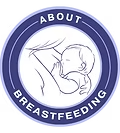
Breastfeeding provides unique health benefits for both women and their breastfed children.
Accordingly, the World Health Organization and Health Canada recommend exclusive breastfeeding for an infant’s first six months of life, with continued breastfeeding up to two years and beyond. The Health Unit provides a variety of supports to help families meet their breastfeeding goals, including breastfeeding classes and in-home feeding support via our Healthy Babies Healthy Children program.

This website provides information, resources and videos on breastfeeding. Topics include the benefits of breastfeeding, how to breastfeed, what to expect when breastfeeding, common concerns, and getting support with breastfeeding.
Resources
Breastfeeding Your Baby (Windsor-Essex County Health Unit, 2024)
This quick reference guide is the digital version of the breastfeeding resource provided by local family birthing centres. The guide provides information about how to latch and position your baby, how to ensure your baby is getting enough milk, and how to express and store breast milk. Available in English only.
Bottle Feeding Your Baby (Windsor-Essex County Health Unit, 2025)
This fact sheet is helpful for families who are breastfeeding and bottle feeding. It includes, Feeding Frequency, Signs of Hunger and Fullness, and Feeding Amounts.
First Exposure is a website that provides information about the safety of medications, plants, environmental substances, and other exposures during pregnancy and while breastfeeding.
Always speak with your medical provider before starting a new medication or when you are ill during pregnancy or while breastfeeding.
Videos
How to breast feed a sleepy newborn, manage engorgement, and hand express breast milk (Peel Region) Available in French, Mandarin, Punjabi, Spanish, Urdu, and Vietnamese.
How to increase the flow of your breast milk while feeding - breast compressions (International Breastfeeding Centre)
How to bottle feed your baby: paced bottle feeding (Peel Region)
Breastfeeding videos in multiple languages (Global Health Media)
How to position your baby while breastfeeding (Peel Region) Available in French, Mandarin, Punjabi, Spanish, Urdu, and Vietnamese.
How to latch your baby to your breast (Peel Region) Available in French, Mandarin, Punjabi, Spanish, Urdu, and Vietnamese.
Frequently Asked Questions
Your newborn baby will need to breastfeed 8 or more times in 24 hours. Your baby will show you signs when they are hungry. These signs are called feeding cues. Learning to recognize your infant’s more subtle, early feeding cues can reduce your child’s need to cry to let you know they are hungry. Responding earlier can also help your child feel well cared for, can strengthen your bond with your baby, and often results in calmer feeding times. Early feeding cues, include:
- Awakening
- Soft sounds
- Mouthing (licking lips or sticking tongue out)
- Rooting (turning the head and opening the mouth)
- Hand to mouth movements.
You can breastfeed your baby for as long as your baby wants to feed. The time of each feeding will vary depending on the time of day, your baby’s level of hunger, and the number of distractions in their environment. Some babies feed for 20 minutes, other babies need more time to complete a feed.
At each feed, offer your baby the breast they finished on during their last feed. Switch to the other breast once your breast is empty or when baby is no longer sucking actively. It is important to allow your baby to completely empty one breast before switching to the other breast to ensure they are getting the nutrient-dense hind milk. Having your baby feed from both breasts regularly is important for establishing and maintaining your breast milk supply.
Breastfeeding should not be painful. If you are experiencing pain with breastfeeding, contact a breastfeeding professional for support. Pain with breastfeeding is often the result of a shallow latch. Follow the steps below to improve your baby’s latch.
Look for the following signs to make sure your baby is getting enough breast milk:
- Your baby feeds at least 8 times every 24 hours.
- Your baby is active and has a strong cry.
- Your baby has a wet, pink mouth, and bright eyes.
- Your baby has enough wet and dirty diapers, according to their age. Click here for more information
Your baby’s primary healthcare provider (i.e., doctor or nurse practitioner) will also track their growth as another way to make sure that your baby is getting the right amount of breast milk. Your baby’s growth should be monitored one to two weeks after birth and at two, four, six, nine, 12, 18 and 24 months of age and every year after age two. Your baby’s primary healthcare provider may monitor your child’s growth more frequently if there is a feeding concern.
If you notice signs that feeding is not going well, especially if your baby is not producing the recommended number of wet and dirty diapers, seek medical attention.

